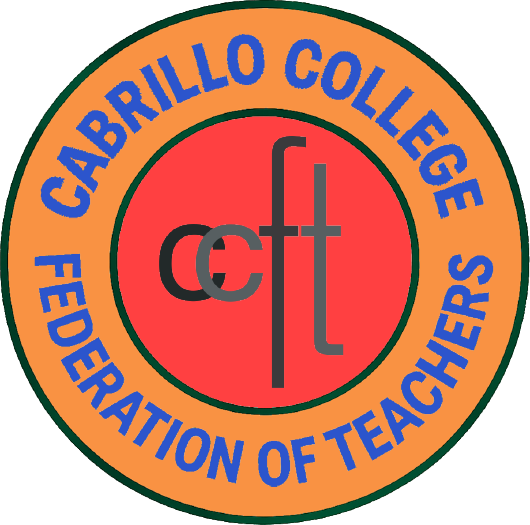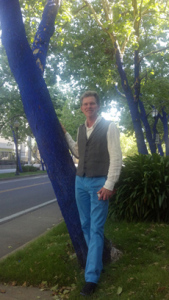As the newly nominated Full-Time Vice President of the CCFT I felt an urgency to learn as much as I could about our faculty union and teachers unions in general. So I decided to attend the CFT Summer School, June 20–24 at the Kellogg West Conference Center, Cal Poly Pomona.
This week long intensive summer school is promoted on its webpage as training to “equip local leaders with the powerful skills to organize successful campaigns to build high-quality public education, involve members in union activities, increase the political voice of educators and establish excellent representation and collective bargaining programs.”
I drove from Santa Cruz leaving early Monday morning, on June 20th, hoping to arrive at Cal Poly by the 1 p.m. start time. The drive was essentially easy until I entered the Inland Empire. Then it turned into what seemed like Hell. The air temperature had been gradually rising, smog became heavier, traffic was slowing, and soon it was obvious as to why – the surrounding hillside were on fire! Too late to turn around I trudged through the mass of traffic that included various emergency response teams while overhead the sky was filled with helicopters and firefighting tanker airplanes. I finally arrived at the Kellogg West Conference Center and not too late. It was 120 degrees and lightly raining ash. Once inside the center it was thankfully air-conditioned. The Kellogg Center and Hotel is a pleasant grouping of buildings located on a hilltop (luckily not on fire) overlooking cereal magnate W.K. Kellogg’s former ranch estate and is operated as part of the Cal Poly Pomona Foundation. CFT has been holding their summer sessions here for at least several years. Prior to that it was held somewhere in Monterey.
After checking in I attended the orientation, already in session, where Josh Pechthalt, CFT President, and Secretary Treasurer, Jeff Freitas, were introducing the program and our faculty for the week. The program is geared for emerging and veteran local leaders wanting to take their skills to the next level like me. It was clear that this would be a week filled with rigorous workshops led by motivated and skilled trainers. Students had pre-registered for one of four workshops lasting the week. These included: Winning the Best Contract: Collective Bargaining & Contract Campaigns, Activating a Leadership Network Across Your Local Union, Organizing for Power: Achieving gains for our members, students and communities, Treasurer’s Training: Financial Stewardship & Leadership for a Strong Local Union. I was enrolled in Organizing for Power led by CFT Training Director, Laura Kurre, and Political Field Director, Jessica Ulstad, two dynamic and organized trainers.
The Course is described as follows: Education and our labor movement today are both faced with very serious challenges from opposing forces. But we have many opportunities to provide the vehicle for our members to work for what they believe in. This course will prepare participants to provide the leadership, strategy, and programmatic organization that will increase the union’s ability to win for members, students and our communities, no matter what challenges come our way.
We were divided into our groups for rest of the afternoon and moved into what would be our classroom for the week. Laura and Jessica eased us into the course curriculum that included books and pamphlets for our study. Homework was assigned every day consisted mostly of reading chapters from the training manual. We had an interesting group of thirteen made up of teachers, nurses, librarians, and some staff members from other community colleges, K-12 schools, and UCSF. We were organized into various breakout sessions and given plenty of opportunity to share our concerns and practices with these other local leaders from across the state and to find inspiration in one another’s work.
The course utilized the “Vital Signs of a Strong Local Union” as its framework and focused on building power through member involvement and political organizing. We also learned how to conduct a power analysis and utilize its findings for campaign strategy. We covered procedures to ensure that campaigns and programs stay on track using benchmarks and strategies for collective accountability. Most importantly I learned ways to help build an effective and inspired team that can get things done.
It was an intensive week and one I was happy to see the end of. Although the hillside fires had been controlled, the heat subsided a bit, the conference centers food was really good and plentiful, the rooms comfortable, and all the participants and leaders were wonderful and interesting, I couldn’t wait to return to Santa Cruz. Mostly I couldn’t wait to get back to my two rescued pugs, Izzy and Roemi, the coastal cool air, and my art studio. But I was also excited about the new knowledge and energy I gained and the ways to share it with our members. I’m even excited to return next summer to take a different course although a alternate seminar location would be nice. Why not back to Monterey?








